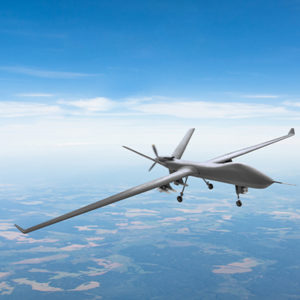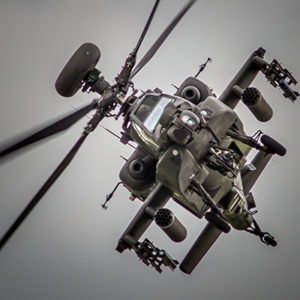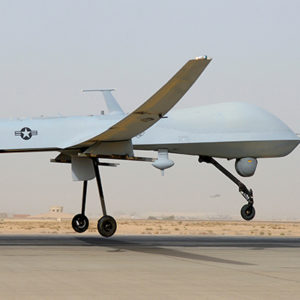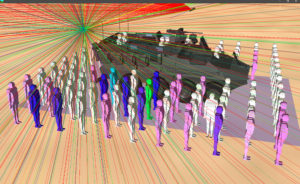Integrated Software Solutions
Strategically positioned to meet customers’ advanced weapons systems needs throughout the entire process. GRA maintains considerable expertise across the spectrum of engineering, design, and development, as well as the employees and resources necessary to provide excellent service.
-
6DOF Analysis
Six Degree of Freedom (6DOF) analysis is conducted with a representative match of a missile system across several platforms with various given environmental conditions. The simulation represents missile’s subsystems, such as the Autopilot, Actuation, Aerodynamics, Propulsion, and Mass Properties. 6DOF Analysis provides insight and technical support from beginning-to-end in the test and operational worlds. This is done by conducting pre-flight simulation analyses, supporting real-time test events, and providing post-flight reconstructions with test data comparisons using real-world Telemetry data and 6DOF simulation data.
- Concept/requirements development
- Software/hardware component development
- Life cycle supportability/extension
- Reliability tests for guidance, accumulator, and control sections
- Launch trajectory optimization

-
Testing & Integration
GRA provides software solutions to support real-time and/or post-test rapid turnaround system data analysis. The GRA Integrated Software team often works with the GRA Integrated Hardware team to create total test solutions.
Integration efforts are the result of the need to interface platforms (UAV, Helicopter, Ground, etc.) with various subsystems. These subsystems can take the form of both standalone mission planning tools as well as fully integrated, weapon systems. A necessary continuation of integration efforts is the need for system-wide implementation tests that verify subsystem performance and overall system interoperability. GRA provides initial implementation testing as well as continual testing to reassess performance when related platform subsystems are upgraded. Lastly, in support of Integration and Testing efforts, GRA has developed rapid prototyping capabilities that allow the team to create new tools whenever necessary to verify system performance.
GRA proudly delivers rapid turnaround prototype and one-off testing and integration solutions. Again, Software and Hardware teams often collaborate to provide total solutions. Examples include Software-In-The-Loop, Hardware-In-The-Loop, test asset data logging in extreme conditions, production asset data logging to support system life-cycle and asset health analysis.
-
Modeling and Simulation
GRA has a long tradition of excellence in the development, validation, and employment of high-fidelity, first-principles models for weapons systems analysis via live/virtual, constructive, and distributed simulation. GRA develops and validates high fidelity, physics-based models which are used in order to perform engineering analyses in an effort to address the customer’s needs. GRA has developed many simulations that have been utilized as part of Simulation-based Acquisition (SBA) process.
- Physics-based: applications to detection/sensing, threat/vulnerability, mechanical, and electromagnetic dynamics
- Active Protection Systems (APS)
- Counter-APS Helicopter

-
Data Visualization
GRA creates tools that display test/lab data in 2D plots and 3D scenes. GRA reduces large simulation data sets into compact binary files using custom-designed file formats. GRA creates in-house tools to generate, manipulate, and validate data files. GRA creates software tools with clean, logical user interfaces tailored to the customer’s needs. GRA has years of experience quickly adding requested features to the customer’s software tool. GRA excels at rapid iterative software development. If you want a feature in your tool, we can get it done.
- Lethality Enhancements
- Missile Trajectories
- Performance Zones
- Designator Exclusion Zones
-
Safety & Reliability
GRA has developed custom in-house mathematical models and statistical algorithms that are used as the building blocks for high fidelity simulations that feed into reliability, test range information, safety requirements, countermeasures, and counter-countermeasures, and 6DOF. These mathematical models help provide statistical input to reliability calculations, safety requirements for test ranges, etc. The applications can be applied to broad areas. GRA interacts with Program Offices, NATO and foreign entities, safety organizations, test ranges, and test centers.
Used to characterize:
- Lasers
- Radar
- HELLFIRE
- Longbow
- Rockets
- Hydra 70
- APKWS
Mathematical: applications to threat classification and identification, tracking and filtering, complex logical algorithms, performance-based specifications
EO/IR/Laser sensor & environment modeling and analysis.

Integrated Software Solutions
Strategically positioned to meet customers’ advanced weapons systems needs throughout the entire process. GRA maintains considerable expertise across the spectrum of engineering, design, and development, as well as the employees and resources necessary to provide excellent service
-
6DOF Analysis
Six Degree of Freedom (6DOF) analysis is conducted with a representative match of a missile system across several platforms with various given environmental conditions. The simulation represents missile’s subsystems, such as the Autopilot, Actuation, Aerodynamics, Propulsion, and Mass Properties. 6DOF Analysis provides insight and technical support from beginning-to-end in the test and operational worlds. This is done by conducting pre-flight simulation analyses, supporting real-time test events, and providing post-flight reconstructions with test data comparisons using real-world Telemetry data and 6DOF simulation data.
- Concept/requirements development
- Software/hardware component development
- Life cycle supportability/extension
- Reliability tests for guidance, accumulator, and control sections
- Launch trajectory optimization

-
Testing & Integration
GRA provides software solutions to support real-time and/or post-test rapid turnaround system data analysis. The GRA Integrated Software team often works with the GRA Integrated Hardware team to create total test solutions.
Integration efforts are the result of the need to interface platforms (UAV, Helicopter, Ground, etc.) with various subsystems. These subsystems can take the form of both standalone mission planning tools as well as fully integrated, weapon systems. A necessary continuation of integration efforts is the need for system-wide implementation tests that verify subsystem performance and overall system interoperability. GRA provides initial implementation testing as well as continual testing to reassess performance when related platform subsystems are upgraded. Lastly, in support of Integration and Testing efforts, GRA has developed rapid prototyping capabilities that allow the team to create new tools whenever necessary to verify system performance.
GRA proudly delivers rapid turnaround prototype and one-off testing and integration solutions. Again, Software and Hardware teams often collaborate to provide total solutions. Examples include Software-In-The-Loop, Hardware-In-The-Loop, test asset data logging in extreme conditions, production asset data logging to support system life-cycle and asset health analysis.
-
Modeling and Simulation
GRA has a long tradition of excellence in the development, validation, and employment of high-fidelity, first-principles models for weapons systems analysis via live/virtual, constructive, and distributed simulation. GRA develops and validates high fidelity, physics-based models which are used in order to perform engineering analyses in an effort to address the customer’s needs. GRA has developed many simulations that have been utilized as part of Simulation-based Acquisition (SBA) process.
- Physics-based: applications to detection/sensing, threat/vulnerability, mechanical, and electromagnetic dynamics
- Active Protection Systems (APS)
- Counter-APS Helicopter

-
Data Visualization
GRA creates tools that display test/lab data in 2D plots and 3D scenes. GRA reduces large simulation data sets into compact binary files using custom-designed file formats. GRA creates in-house tools to generate, manipulate, and validate data files. GRA creates software tools with clean, logical user interfaces tailored to the customer’s needs. GRA has years of experience quickly adding requested features to the customer’s software tool. GRA excels at rapid iterative software development. If you want a feature in your tool, we can get it done.
- Lethality Enhancements
- Missile Trajectories
- Performance Zones
- Designator Exclusion Zones
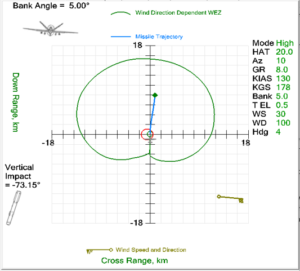
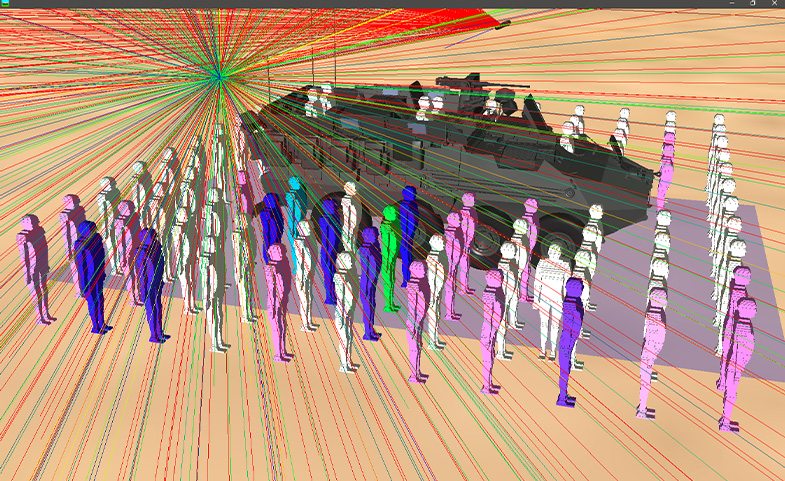
-
Safety & Reliability
GRA has developed custom in-house mathematical models and statistical algorithms that are used as the building blocks for high fidelity simulations that feed into reliability, test range information, safety requirements, countermeasures, and counter-countermeasures, and 6DOF. These mathematical models help provide statistical input to reliability calculations, safety requirements for test ranges, etc. The applications can be applied to broad areas. GRA interacts with Program Offices, NATO and foreign entities, safety organizations, test ranges, and test centers.
Used to characterize:
- Lasers
- Radar
- HELLFIRE
- Longbow
- Rockets
- Hydra 70
- APKWS
Mathematical: applications to threat classification and identification, tracking and filtering, complex logical algorithms, performance-based specifications
EO/IR/Laser sensor & environment modeling and analysis.




